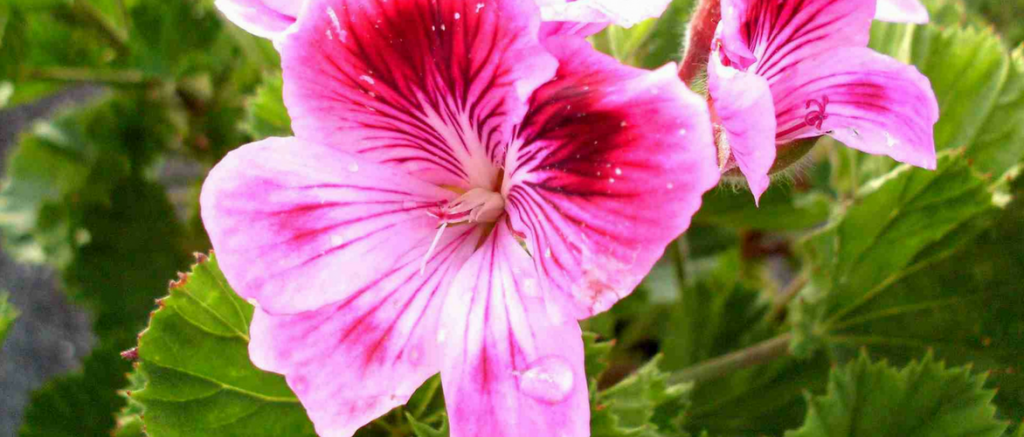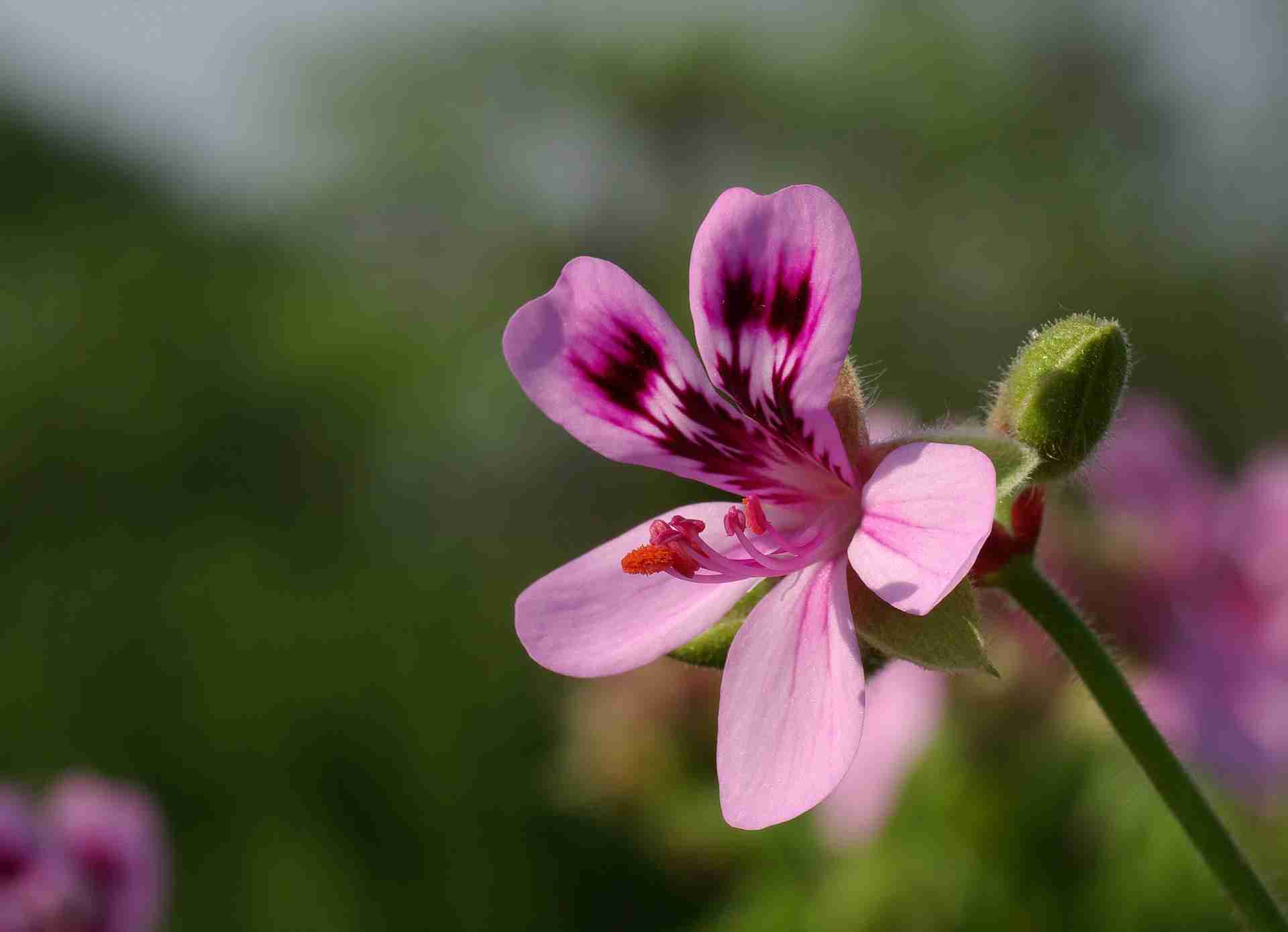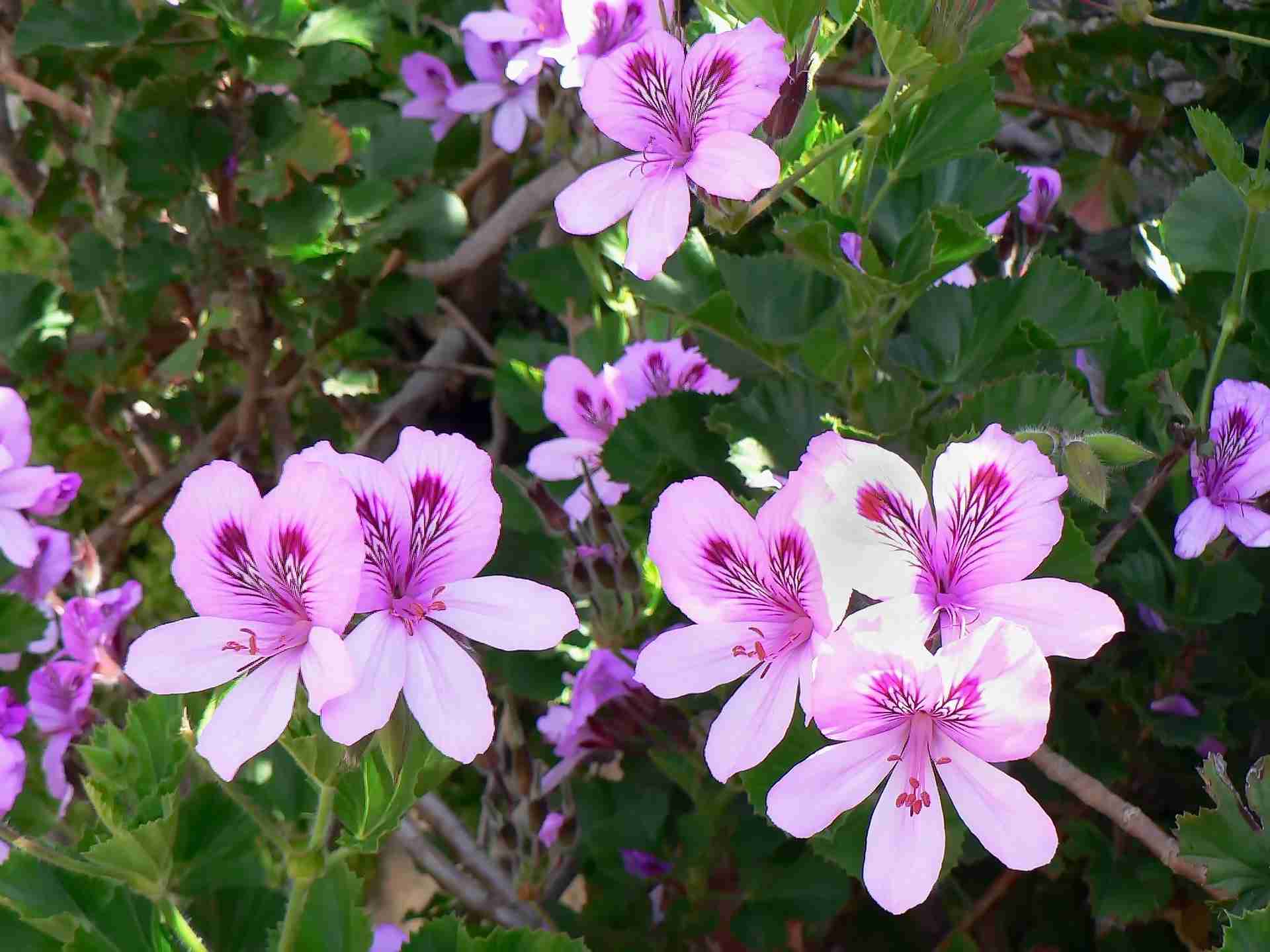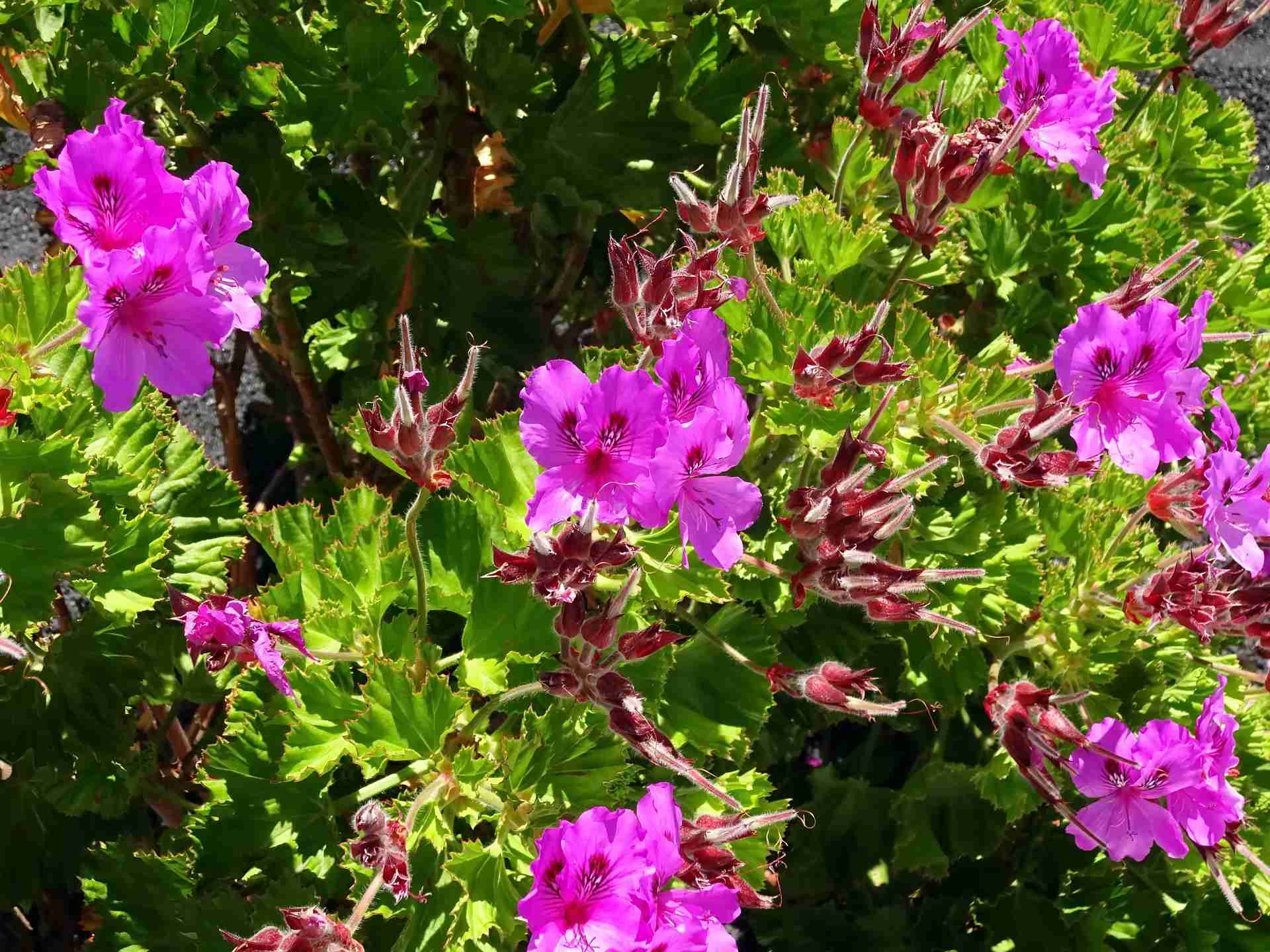
Fragrant Geraniums: How to Grow Them Successfully
To enjoy in the garden or on the balcony
Contents
Undisputed kings of summer planters, Scented Geraniums or Pelargoniums with fragrant foliage are hardy and easy to grow. Planting them is incredibly simple, and they thrive equally well in the ground or in pots on the terrace or in a conservatory. Rose, lemon, orange, pineapple, mint, spice, and even carrot—they release intense and varied fragrances at the slightest touch of their leaves (which are edible), with the added bonus of repelling mosquitoes. Discover all the secrets to successful planting!
Where to plant your scented geraniums?
Fragrant geraniums are Mediterranean plants that thrive in warmth and sunlight. To provide them with the best growing conditions, place them in a sheltered spot away from wind and in full sun. A sunny exposure ensures abundant flowering and highly aromatic foliage.
However, these plants also adapt to partial shade, particularly in regions where summer sun can be intense. Light afternoon shade can even be beneficial to prevent heat stress.
If you live in a mild climate area with minimal frost risk, you can plant your fragrant geraniums directly in the garden, in well-drained soil. They dislike excess moisture, so light soil enriched with compost and possibly amended with some sand will suit them perfectly.
For cooler climates or if you wish to grow them on a terrace or balcony, fragrant geraniums also thrive very well in pots or planters. Choose a container at least 15 to 20 cm deep and wide for each plant. The pot must have drainage holes to prevent any risk of root rot. Use a light potting mix, ideally specific for Mediterranean plants or geraniums, and add a drainage layer (gravel or clay pebbles) at the bottom of the pot.

Plant them, whether in pots or in the ground, in a spot where you can touch and crush their fragrant leaves
How to plant?
In the ground:
- Prepare the soil to a depth of about 20 cm to allow for good root development. Ensure the soil is well-drained, as scented geraniums dislike excess moisture. If needed, add some sand to lighten the soil.
- Mix the soil with a natural base fertiliser, such as ground horn or manure, to provide long-term nutrients.
- Dig a hole twice as wide as the root ball, water the base thoroughly, then place the plant, ensuring the base of the stem is level with the soil.
- Mix the planting soil with a suitable compost (such as Mediterranean plant mix) and backfill the hole. Gently firm the soil around the plant.
- Space plants 20 to 30 cm apart to allow for proper growth and avoid excessive competition for water and light.
- Water generously immediately after planting, then monitor soil moisture for the first month to encourage establishment.
Tip: If you live in a warm region, mulch the soil around the plants to retain moisture and reduce watering needs.
In pots or containers:
- Choose a pot at least 15 to 20 cm deep and wide per plant. Ensure the pot has drainage holes to prevent waterlogging.
- Place a drainage layer (gravel, broken pottery, or clay pebbles) at the bottom of the pot to improve water flow.
- Fill the pot with a light, well-draining compost, ideally one formulated for Mediterranean plants or geraniums.
- Position the geranium’s root ball in the centre of the pot, then fill with compost, leaving about 2 to 3 cm below the rim for easy watering.
- After planting, water thoroughly to moisten the entire substrate.
- In containers, space scented geraniums about 15 cm apart for a lush effect without overcrowding.
Pots dry out faster than garden soil, so plan to water at least once a week in summer, or more frequently during hot spells.

How to care for them?
Remember to water them regularly: in open ground, weekly watering is sufficient in summer, while in pots, the compost dries out faster, requiring watering every three to four days. Water in the morning or late afternoon to avoid evaporation. To support their growth, apply a liquid fertiliser rich in potash every fortnight in spring and summer, especially for potted plants where the soil becomes depleted more quickly.
Regularly remove faded flowers and dead leaves to encourage new growth and the appearance of fresh blooms, and lightly prune in spring if stems become too long.
Finally, keep an eye out for aphids and red spider mites, as well as excess moisture which can lead to fungal diseases. By following these simple tips, your scented geraniums will stay in top condition and enhance your space.

How to overwinter scented geraniums?
To overwinter geraniums, start by cutting back the stems by about one-third of their height in October, just before the first frosts arrive. This pruning helps reduce their bulk and encourages good regrowth in spring. Then bring your geraniums indoors to a bright, unheated but frost-free location, such as a garage, shed, conservatory or even a cool room.
During the dormant period, water lightly about once a month, just enough to keep the root ball slightly moist. Avoid overwatering, as the roots could rot. In spring, once the risk of frost has passed, you can move your geraniums back outside to enjoy the light and warmth.
If your scented geraniums are grown in the ground, you’ll need to dig them up in autumn. Place them in suitable pots or containers, then follow the same overwintering instructions. This step may seem tedious, but it’s essential in regions with harsh winters.
Keeping scented geraniums outdoors in winter is only feasible in mild, sheltered climates, such as coastal areas or southern France. Even in these conditions, they can only tolerate light, short-lived frosts. To maximise their chances of survival, protect the plants with a thick mulch and possibly cover them with horticultural fleece if the cold becomes more intense.

In regions with harsh winters, you’ll need to overwinter your geraniums
- Subscribe!
- Contents

































